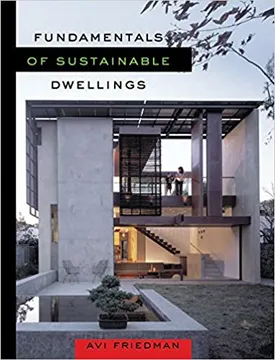Fundamentals of Sustainable Dwellings by Avi Friedman
Humans are growing more and more aware of their impact on the environment. This awareness has spurred a global movement toward building sustainable dwellings that reduce our negative impact on the environment. Avi Friedman provides us with a unique insight into the fundamentals of sustainable dwellings in his book “Sustainable Dwellings: Principles and Practice”. Friedman argues that to build sustainably, society must pay attention to building systems more than individual eco-friendly products, use energy efficient systems and materials, and focus on the well-being of inhabitants.
The first fundamental of sustainable dwellings proposed by Friedman is to think of houses as systems rather than individual components. He warns against constructing dwellings with tack-on features and instead encourages the use of integrated approaches. Integrated systems provide a variety of benefits, including reducing material costs and eliminating thermal bridges.
Friedmanalso cautions that most sustainable construction starts with choosing the correct materials. He stresses the importance of using non-toxic and renewable materials, such as those derived from agricultural and forestry residues or recycled wood. He suggests using highly insulating materials to decrease the need for heating and cooling systems. Similarly, he advocates for airtightness in construction to limit air infiltration and reduce energy-related losses.
Friedman emphasizes the use of renewable energy and energy efficiency as key components of sustainable dwellings. He advises that parts of buildings, such as roofs, should be designed with south-facing inclination to harvest energy from the sun. Alternatively, he proposes the use of wind and geothermal to generate electricity and heat energy, as well as the installment of photovoltaic panels for energy use in dwellings. One of Friedman’s feasible suggestions is to design dwellings with passive solar energy strategies in mind.
Furthermore, Friedman encourages the use of green features, such as green roofs, which can regulate temperature, reduce air pollution and conserve rainwater, as well as rain gardens which capture and clean runoff. To reduce water use in dwellings, he recommends installing efficient water fixtures, collecting rainwater and employing a greywater system.
Finally, Friedman stresses the need to consider the health and well-being of inhabitants when constructing dwellings. He suggests using natural materials, such as wood, that bring warmth, promote indoor air quality and positivenly affect biophilia. He also encourages providing access to natural light and views of nature, as well as connecting dwellings to nature both inside and outside.
In sum, Avi Friedman’s book “Sustainable Dwellings: Principles and Practice” provides us with a comprehensive understanding of the fundamentals of sustainable dwellings. By shifting our thinking towards system-based approaches, using sustainable materials and energy efficient systems, incorporating green features, and considering inhabitants well-being, we can create dwellings that reduce our impact on the environment and promote positive relationships between dwellings and the environment.

